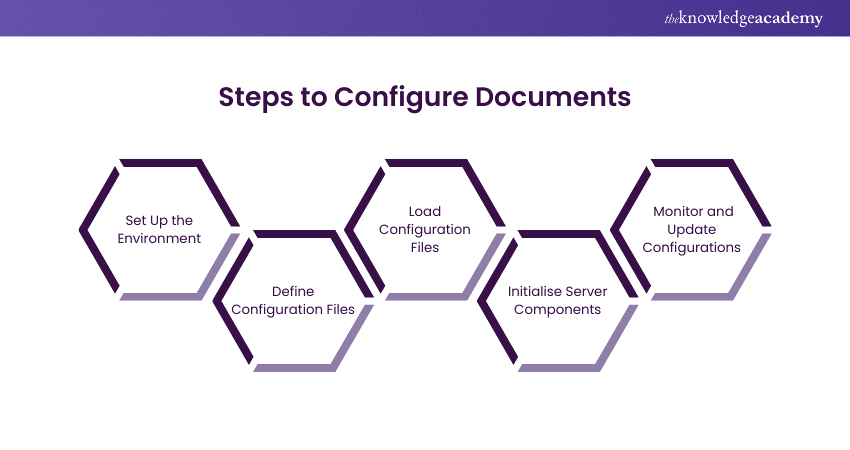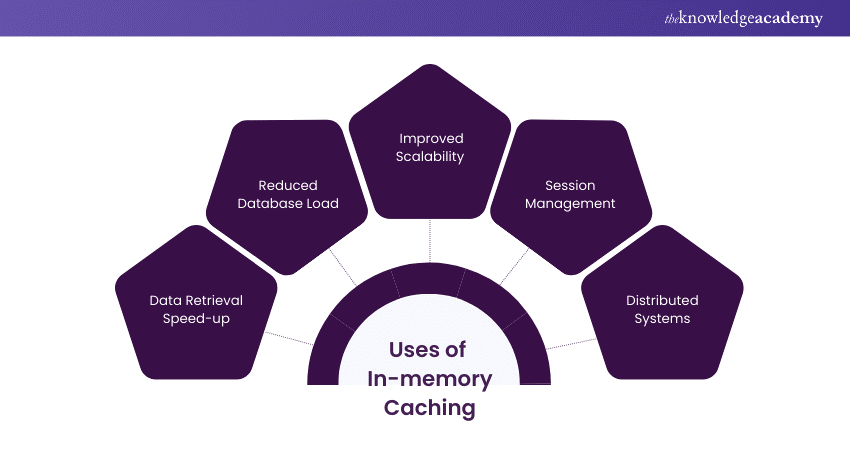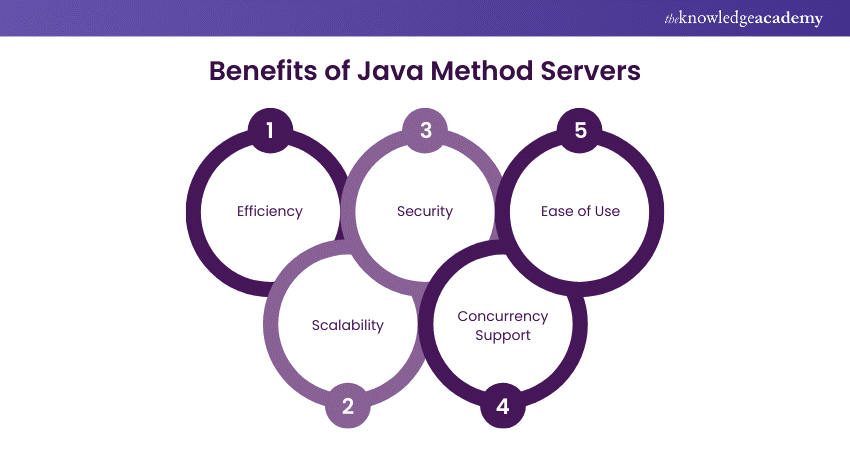We may not have the course you’re looking for. If you enquire or give us a call on +971 8000311193 and speak to our training experts, we may still be able to help with your training requirements.
Training Outcomes Within Your Budget!
We ensure quality, budget-alignment, and timely delivery by our expert instructors.

Have you ever wondered how large-scale applications manage to handle complex method invocations seamlessly? Java Method Servers are the backbone of such operations, ensuring efficient method execution, parameter management, and control flow. But what exactly makes this server indispensable in modern Software Development?
In this blog, we will dive deep into the world of Java Method Servers, uncovering their core functionalities, practical applications, and the numerous advantages they bring to the table. Read more to unlock their full potential and transform your development process.
Table of Contents
1) Understanding Java Method Servers
2) Key Features of Java Method Servers
3) How do Java Method Servers Operate?
4) Configuring a Java Method Server
5) Practical Uses of Java Method Servers
6) Enhancing Performance in Java Method Servers
7) Advantages of Java Method Servers
8) Future Trends and Innovations in Java Method Servers
9) Conclusion
Understanding Java Method Servers
Fundamentally, the Java Method Server handles method invocations, manages parameters, and ensures smooth control flow within the application. By leveraging this tool, developers can streamline their development process, enhance code organisation, and boost overall performance.
Key Features of Java Method Servers
Java Method Servers offer multiple features that enhance the development and performance of applications. Let's explore them:

a) Java Method Servers are designed to manage method invocations efficiently, ensuring that the correct method is called with the appropriate parameters.
b) They ensure parameters are correctly passed and processed, reducing errors and enhancing application reliability.
c) By managing control flow, Java Method Servers coordinate method execution and handle exceptions gracefully, ensuring performance and stability.
d) They provide robust support for concurrent task execution, allowing multiple methods to run simultaneously.
e) Java Method Servers are built to scale efficiently, handling increased loads without compromising performance.
f) They incorporate security measures like authentication and authorisations to protect sensitive data and ensure only authorised users can invoke certain methods.
g) Comprehensive logging and monitoring capabilities allow developers to track method invocations, monitor performance, and quickly identify and resolve issues.
h) Features like caching and load balancing are included to optimise performance, ensuring applications run smoothly and efficiently.
Unlock your potential with our expert-led Java Courses - secure your spot now!
How do Java Method Servers Operate?
Here are the steps involved in the operation of Java Method Servers:
1) Intercept Method Call: The server intercepts the method call and identifies the appropriate method to execute.
2) Parameter Validation: It validates and processes the parameters passed to the method.
3) Execute Method: The server invokes the method with the validated parameters.
4) Manage Control Flow: It coordinates the sequence of method calls and handles dependencies.
5) Concurrency Handling: The server manages concurrent method executions using threads and resources.
6) Error Handling: It catches and logs exceptions, taking necessary actions to maintain stability.
7) Security Checks: The server performs authentication and authorisation to ensure secure method access.
8) Logging and Monitoring: It logs method invocations, parameters, execution times, and errors for monitoring and troubleshooting.
9) Integration: The server integrates with other systems and tools as needed during method execution.
10) Optimisation: It implements caching, load balancing, and other optimisation techniques for performance.
11) Scalability: The server scales to handle increased loads by distributing method invocations across multiple servers.
Configuring a Java Method Server
Configuring a Java Method Server involves several steps to ensure it operates efficiently and securely. Here’s a detailed guide:
1) Installation and Setup:
a) Install Java Development Kit (JDK): Ensure that the latest version of the JDK is installed on your server.
b) Download and Install the Server Software: Obtain the Java Method Server software and follow the installation instructions provided by the vendor.
2) Environment Configuration:
a) Set Environment Variables: Configure environment variables such as JAVA_HOME and PATH to point to the JDK installation directory.
b) Configure Memory Settings: Adjust the JVM memory settings (e.g., -Xms and -Xmx parameters) to optimise performance based on the server’s hardware specifications.
3) Server Configuration:
a) Edit Configuration Files: Modify the server’s configuration files to set parameters such as port numbers, thread pools, and logging levels.
b) Database Connectivity: Configure database connections by specifying JDBC URLs, usernames, and passwords in the configuration files.
4) Security Settings:
a) Enable Authentication and Authorisation: Set up user authentication and authorisation mechanisms to control access to the server’s methods.
b) Configure SSL/TLS: Enable SSL/TLS to encrypt data transmitted between clients and the server, ensuring secure communication.
Start building dynamic and interactive websites from scratch - sign up for our JavaScript for Beginners Training now!
5) Deployment of Applications:
a) Package Applications: Package your Java applications (e.g., as WAR or JAR files) and deploy them to the server.
b) Configure Application Settings: Adjust application-specific settings such as context paths, resource limits, and environment variables.
6) Monitoring and Logging:
a) Set Up Logging: Configure logging frameworks (e.g., Log4j or SLF4J) to capture and store logs for monitoring and troubleshooting.
b) Enable Monitoring Tools: Integrate monitoring tools (e.g., JMX or Prometheus) to track server performance and resource utilisation.
7) Performance Tuning:
a) Adjust Thread Pools: Configure thread pools to optimise the handling of concurrent method invocations.
b) Enable Caching: Implement caching mechanisms to reduce latency and improve response times for frequently accessed data.
8) Backup and Recovery:
Set Up Backup Procedures: Establish regular backup procedures for configuration files, databases, and application data.
Configure Recovery Plans: Develop and test recovery plans to ensure quick restoration of services in case of failures.
9) Testing and Validation:
a) Perform Functional Testing: Test the server’s functionality to ensure that all methods are invoked correctly, and parameters are handled properly.
b) Conduct Load Testing: Simulate high-load scenarios to validate the server’s scalability and performance under stress.
10) Documentation and Training:
a) Document Configuration Steps: Maintain detailed documentation of the configuration process, including any custom settings and optimisations.

Additionally, ensure that it is regularly updated to reflect any changes or improvements.
b) Provide Training: Train your development and operations teams on how to manage and maintain the Java Method Server.
Practical Uses of Java Method Servers
Java Method Servers are versatile tools that can significantly enhance various types of applications. Here are some practical uses:
a) Enterprise Applications: Manage complex business logic, transactions, and user sessions.
b) Web Services: Handle RESTful and SOAP-based web service requests efficiently.
c) Microservices Architecture: Facilitate interactions between microservices for scalability and resilience.
d) Serverless Computing: Deploy Java functions on-demand without managing server infrastructure.
e) Real-Time Data Processing: Process and analyse data streams for real-time applications.
f) API Gateways: Manage Application Programming Interface (API) calls with tasks like request routing and authentication.
g) Batch Processing: Execute batch jobs for large data sets and manage scheduling.
h) Integration with Legacy Systems: Seamlessly integrate modern applications with older systems.
i) Cloud-Based Applications: Handle method invocations across distributed cloud environments.
j) Security and Compliance: Enforce security policies and ensure regulatory compliance.
Enhancing Performance in Java Method Servers
Enhancing the performance of Java Method Servers involves several strategies and best practices to ensure efficient and responsive applications. Here are some detailed approaches:
1) Optimising JVM Settings:
a) Memory Allocation: Adjust the JVM memory settings (-Xms and -Xmx) to allocate sufficient memory for the server. This helps reduce garbage collection pauses and improve overall performance.
b) Garbage Collection Tuning: Choose the appropriate garbage collection algorithm (e.g., G1, CMS) based on the application’s needs and tune its parameters to minimise latency and maximise throughput.
2) Efficient Method Invocation:
a) Method Caching: Implement caching for frequently invoked methods to reduce the overhead of repeated method calls. This can significantly improve response times for common operations.
b) Lazy Initialisation: Use lazy initialisation to defer the creation of objects until they are actually needed. This reduces the initial load time and conserves resources.
3) Concurrency Management:
a) Thread Pool Configuration: Configure thread pools to handle concurrent method invocations efficiently. Adjust the size of the thread pool based on the server’s capacity and the expected workload.
b) Asynchronous Processing: Implement asynchronous processing for tasks that do not require immediate completion. This allows the server to handle more requests concurrently and improves overall throughout.
Boost your Java skills with our comprehensive Hibernate Training – join us and efficiently enhance your application’s performance.
4) Load Balancing:
Distribute Workload: Use load-balancing techniques to distribute the workload across multiple servers. This ensures that no single server becomes a bottleneck and helps maintain high availability.
Horizontal Scaling: Scale the server horizontally by adding more instances to handle increased traffic. This approach allows the application to grow without compromising performance.
5) Database Optimisation:
Connection Pooling: Implement connection pooling to manage database connections efficiently. This reduces the overhead of establishing new connections and improves query performance.
Query Optimisation: Optimise database queries to reduce execution time. Use indexing, query caching, and other techniques to enhance database performance.
6) Caching Strategies:
a) In-memory Caching: Use in-memory caching solutions (e.g., Redis, Memcached) to store frequently accessed data.

This reduces the need to fetch data from the database repeatedly and improves response times.
b) Content Delivery Networks (CDNs): For applications serving static content, use CDNs to cache and deliver content closer to the users. This reduces latency and improves load times.
7) Monitoring and Profiling:
Performance Monitoring: Implement monitoring tools to track the server’s performance metrics, such as CPU usage, memory consumption, and response times. This helps identify performance bottlenecks and areas for improvement.
Profiling Tools: Use profiling tools to analyse the server’s performance at a granular level. Identify slow methods, memory leaks, and other issues that impact performance.
8) Code Optimisation:
Efficient Algorithms: Use efficient algorithms and data structures to optimise the performance of methods. Avoid unnecessary computations and optimise loops and conditional statements.
Code Refactoring: Regularly refactor code to improve its efficiency and maintainability. Remove redundant code, optimise method calls, and ensure that the codebase remains clean and performant.
9) Network Optimisation:
Reduce Latency: Optimise network configurations to reduce latency. Use techniques such as HTTP/2, persistent connections, and compression to improve data transfer speeds.
Minimise Data Transfer: Reduce the amount of data transferred between the server and clients. Use techniques such as data compression, pagination, and selective data fetching to minimise network overhead.
10) Security Enhancements:
Secure Communication: Ensure that all communication between clients and the server is encrypted using SSL/TLS. This not only enhances security but also improves performance by reducing the risk of data breaches.
Regular Updates: Keep the server software and dependencies up to date with the latest security patches and performance improvements. This helps maintain a secure and performant server environment.
Elevate your career with our Java Engineer Training - sign up now and acquire the skills to excel in the industry!
Advantages of Java Method Servers
Java Method Servers offer numerous benefits that enhance the development and performance of applications. Let's explore some key advantages:

a) Streamlines method invocations and parameter management, improving execution speed and reducing complexity.
b) Handles increased loads effectively by distributing method invocations across multiple servers.
c) Incorporates advanced security features like authentication, authorisation, and encryption to protect sensitive data.
d) Allows multiple methods to be executed simultaneously, enhancing application efficiency and responsiveness.
e) Offers intuitive interfaces and comprehensive documentation, making it easier for developers to implement and manage method invocations.
Future Trends and Innovations in Java Method Servers
The landscape of Java Method Servers is set for significant changes driven by emerging technologies and evolving development practices. Here’s an overview of the key trends and innovations expected to shape their future:
1) Adoption of Microservices: Java Method Servers are becoming more service-oriented, supporting microservices architecture for better scalability and resilience.
2) Serverless Computing: They are evolving to support serverless Java functions, reducing server management and increasing productivity.
3) AI and Machine Learning Integration: AI can be used for automated performance tuning, predictive scaling, and intelligent load balancing.
4) Enhanced Security Features: Future enhancements include advanced encryption, automated security patching, and AI-driven threat detection.
5) Sustainable Computing: Focus on optimising server efficiency to reduce energy consumption and develop eco-friendly coding practices.
Conclusion
In conclusion, Java Method Servers are indispensable tools that enhance the efficiency, scalability, and security of modern applications. By mastering their features and best practices, developers can significantly improve their development process and application performance.
Transform your skills with our Web Development Using Java Training - join us and build dynamic websites with expert guidance!
Frequently Asked Questions

Yes, string validation can be automated in unit tests. You can create test cases to check various string conditions, such as format, length, and content. Automated tests ensure that validation rules are consistently applied and help catch issues early in the development process.

To handle case sensitivity in string validation, use case-insensitive comparison methods or convert strings to a common case (upper or lower) before validation. This approach ensures consistency and accuracy in matching and validating strings regardless of their original case.

The Knowledge Academy takes global learning to new heights, offering over 30,000 online courses across 490+ locations in 220 countries. This expansive reach ensures accessibility and convenience for learners worldwide.
Alongside our diverse Online Course Catalogue, encompassing 17 major categories, we go the extra mile by providing a plethora of free educational Online Resources like News updates, Blogs, videos, webinars, and interview questions. Tailoring learning experiences further, professionals can maximise value with customisable Course Bundles of TKA.

The Knowledge Academy’s Knowledge Pass, a prepaid voucher, adds another layer of flexibility, allowing course bookings over a 12-month period. Join us on a journey where education knows no bounds.

The Knowledge Academy offers various Java Courses, including the Java Programming Training, Java Swing Development Training, and Java Engineer Training. These courses cater to different skill levels, providing comprehensive insights into Java Developer Salary.
Our Programming & DevOps Blogs cover a range of topics related to Java Methods, offering valuable resources, best practices, and industry insights. Whether you are a beginner or looking to advance your Programming & DevOps skills, The Knowledge Academy's diverse courses and informative blogs have got you covered.
Upcoming IT Security & Data Protection Resources Batches & Dates
Date
 Java Programming
Java Programming
Mon 20th Jan 2025
Mon 3rd Mar 2025
Mon 12th May 2025
Mon 14th Jul 2025
Mon 22nd Sep 2025
Mon 17th Nov 2025







 Top Rated Course
Top Rated Course



 If you wish to make any changes to your course, please
If you wish to make any changes to your course, please


